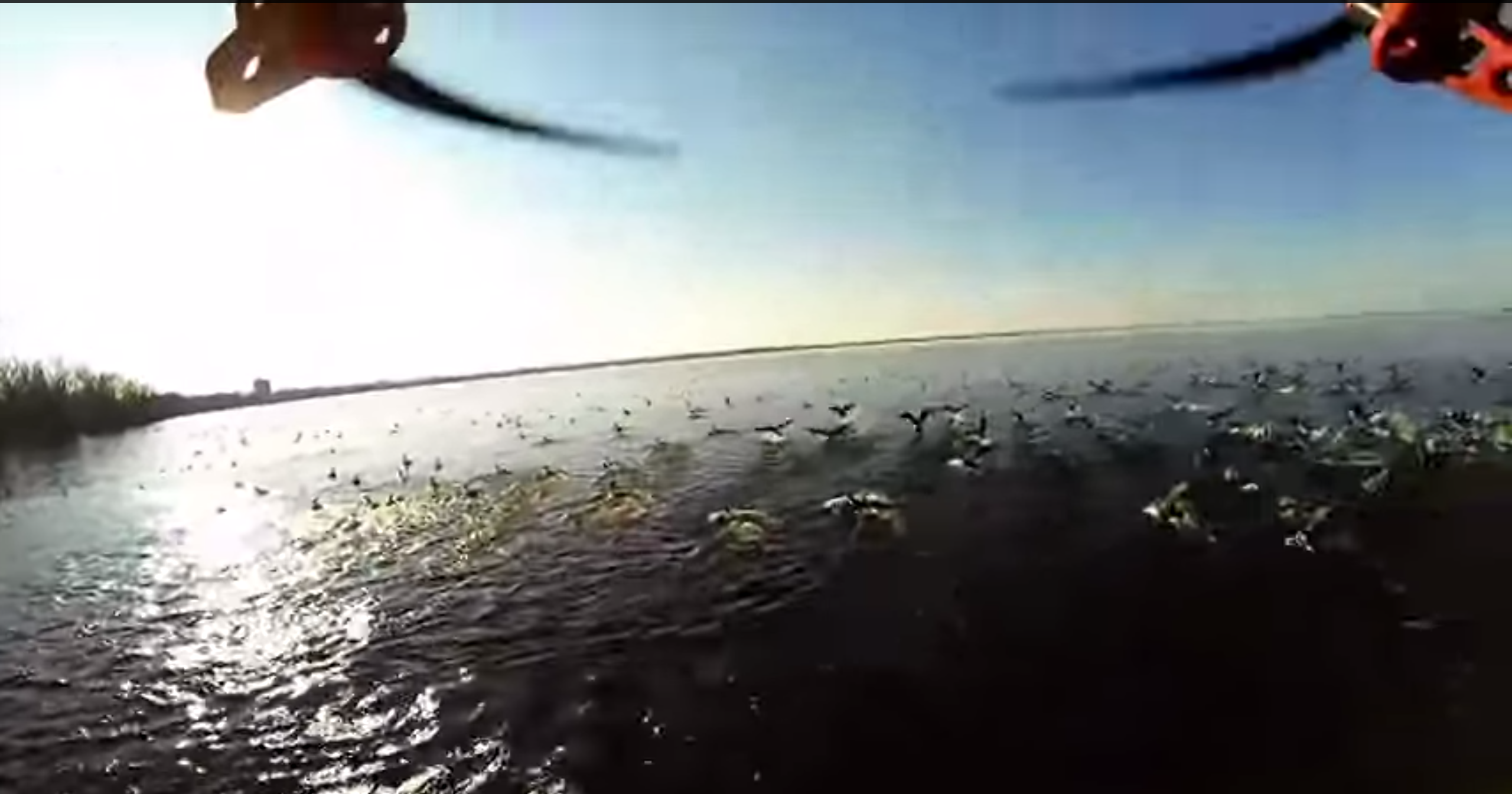Drones and lasers could be deployed by the Scottish Government in a £41million bid to rid an island of its rampaging populations of geese.
Islay has 70% of the world’s barnacle and white-fronted geese – but the birds are acting like “a swarm of locusts” according to angry farmers.
A report reveals that Scottish Natural Heritage (SNH) has already tried and failed to control the flocks using bizarre methods such as self-launching kites, helium balloons, fireworks and a gas-inflated, siren-blazing ‘scary man’ mannequin.
However, the birds barely paid any notice and SNH is planning a tougher strategy, amid pressure from Islay farmers concerned about the damage geese are causing to their £11million-a-year industry.
Radio-controlled drone aircraft, powerful laser beams and robotic four wheel drive vehicles are among the techniques being considered to drive away the geese.
If that fails, a large-scale cull could be ordered, either by shooting or covering geese eggs in oil and smothering the chicks inside.
The controversial crackdown – which is opposed by groups including the RSPB – will cost taxpayers between £30million-£41million over the next 15 years.
A spokesman for SNH said: “We are currently finalising a new longer term goose management strategy for Islay. This will reduce the crop damage caused by barnacle geese, improve habitat for white-fronted geese and make best use of available funding.
“The aim is for a pragmatic approach that balances the need to support sustainable goose populations with the interests of Islay farmers and the limitations on available budgets.”
Almost 5,000 of the 55,000 geese have already been legally culled since 2011 by farmers, who have also received almost £850,000 in compensation.
The Islay Sustainable Goose Management Strategy devised by SNH’s and the National Farmer’s Union (NFU) aims to cut the population by 30%.
A spokesman from RSPB said: “Though we acknowledge that geese can affect farm profits, we have expressed our opposition to this plan, and questioned its compliance with international law.”
